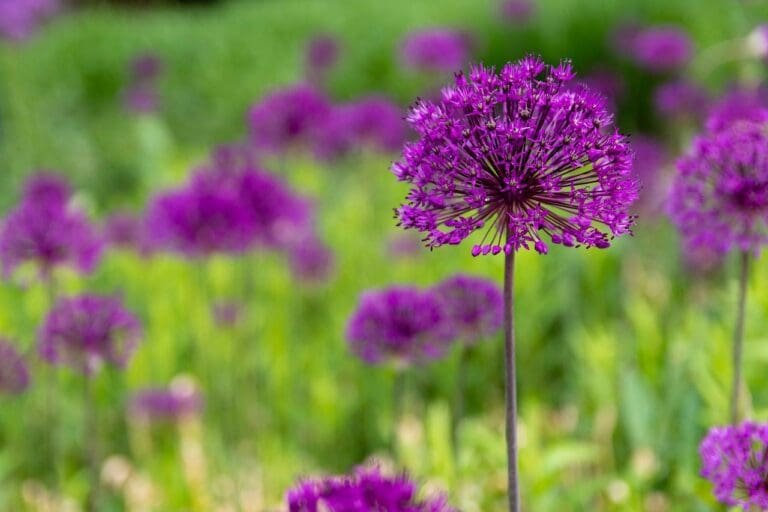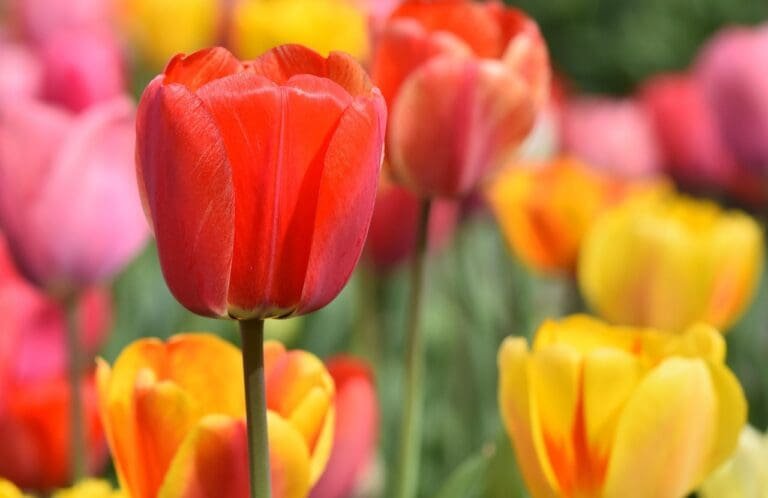The best times for planting poppies are during spring or autumn. Notably, autumn-sown poppies often bloom in their very first year.
Poppies are eye-catching flowers that add a burst of colour to any garden. Learning how to grow poppies is straightforward, and they can transform your garden into a spectacular display of beauty.
You might also be interested in: Best Annuals For Wild Gardens
Best Times to Sow Poppies In The UK
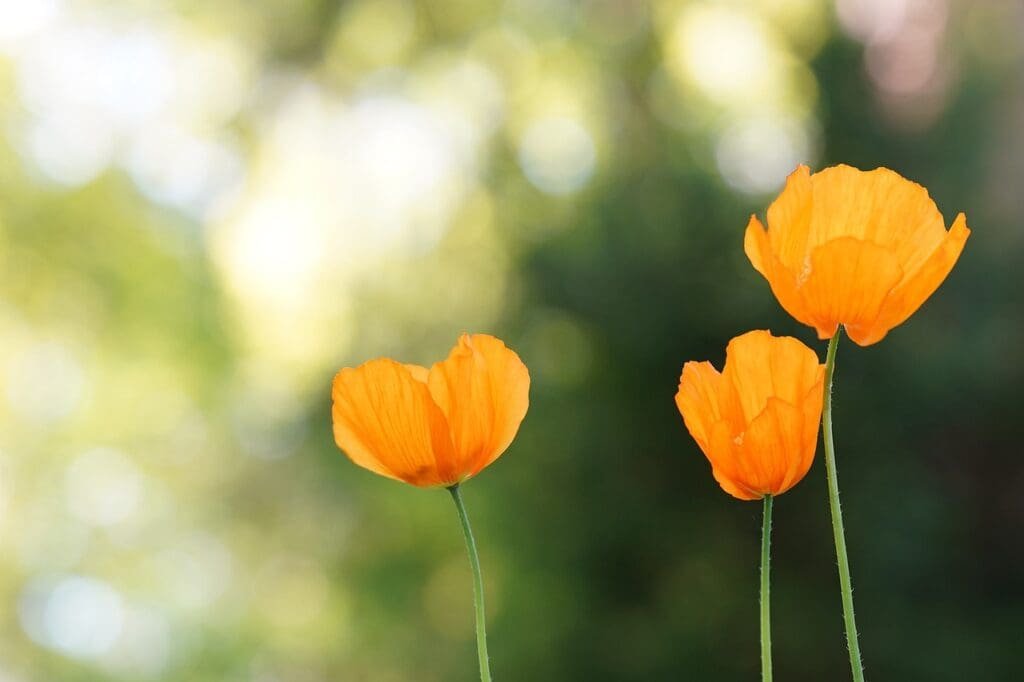
Poppies are flexible plants for UK gardens, suitable for planting in both spring and autumn. However, poppies planted in autumn often flower in their first season, unlike those planted in spring.
If you plant poppies in spring, they’ll likely sprout, but you might have to wait until the next season to see them bloom.
Top Tip: Sow poppies in sunny spots with good drainage for best results.
How To Grow Poppies
Poppies, despite their delicate look, are surprisingly easy to grow. Once established, they often return to your garden each year. Here’s a simple guide to get you started:
- Choose Your Spot: Poppies love sunlight. Pick a sunny part of your garden with well-draining soil.
- Sow the Seeds: It’s best to sow poppy seeds directly into the soil due to their tiny size. Sprinkle them thinly over your chosen spot, ideally in natural drifts or open spaces in your flower bed. Gently press the seeds into the soil for good contact.
- Space Them Out: When the seedlings are about 3-5 inches tall, thin them to leave about 20cm (8 inches) between each plant. This gives them enough space to grow well.
- Care for Your Poppies: Deadhead faded flowers to encourage more blooms. If you want to control the spread of annual poppies, remove the seed heads after flowering.
Reasons to Grow Poppies?
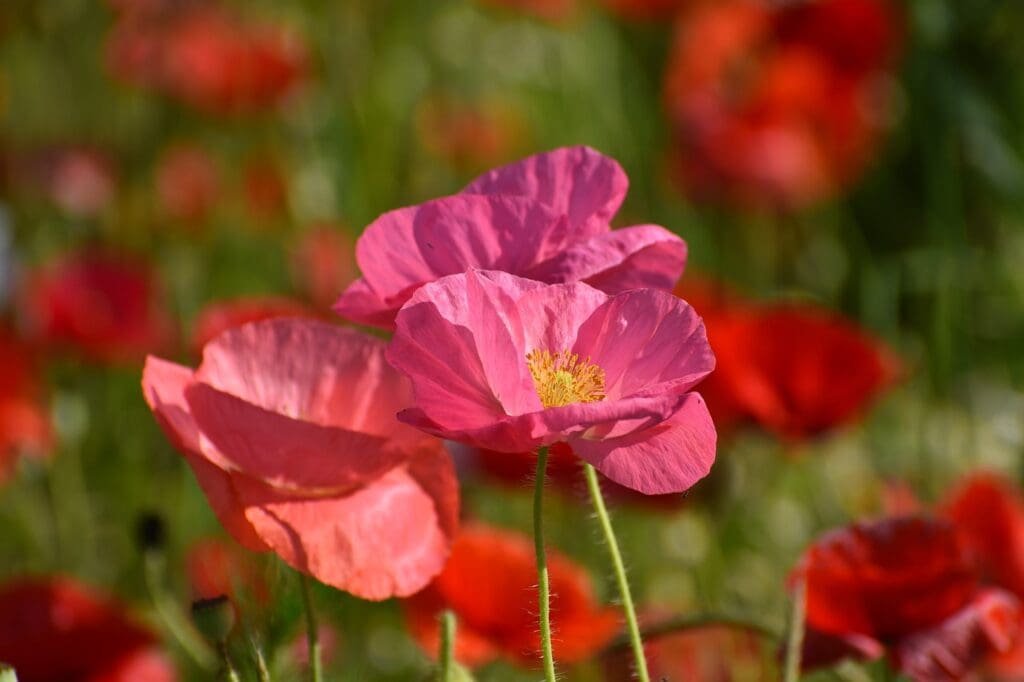
- Easy to Grow: Poppies are hardy and low-maintenance, making them ideal for beginners.
- Great for Kids: Their simplicity offers a perfect introduction to gardening for children.
- Attract Pollinators: Poppies are excellent at attracting bees and butterflies, benefiting your entire garden.
- Versatile: With a wide range of colours and varieties, poppies allow for creative experimentation each season.
How to Grow Poppies in Pots and Containers
- Suitable for Containers: Poppies can thrive in pots and containers, perfect for limited space or preference for container gardening.
- Moist Soil: Keep the soil in containers moist, as it tends to dry out faster than ground soil.
- Sunny Location: Place pots in a sunny spot to mimic poppies’ natural growing conditions.
- Well-Draining Soil: Use well-draining soil in your containers to keep poppies healthy.
- Drainage Holes: Ensure your pots have drainage holes to prevent waterlogging.
Poppy Varieties to Consider
1. Himalayan Blue Poppy (Meconopsis)
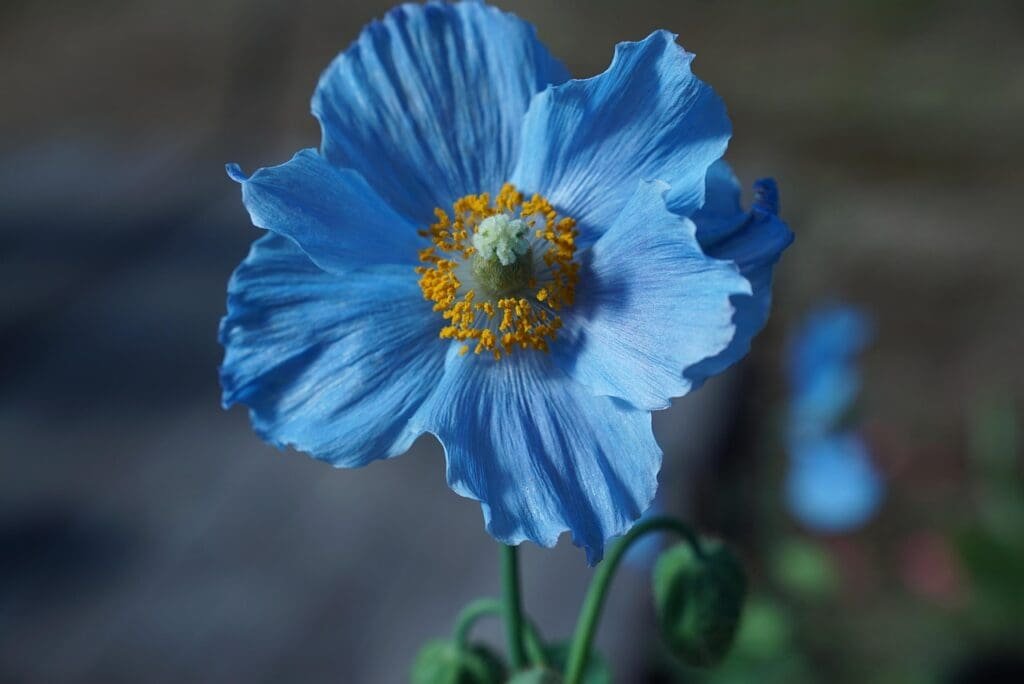
The Himalayan Blue Poppy, native to the Himalayas’ cool, shady regions, is a real showstopper. It stands out with its unique, large, cup-shaped brilliant blue flowers, a rarity among poppies.
These ethereal blooms are among the few flowers to produce a true blue color. They can grow to a height of about 1.2 meters, adding a striking presence to any garden.
Thriving best in damp, shady conditions and acidic soil, they are perfect for woodland gardens. However, be aware that these stunning plants can be temperamental, requiring extra care, particularly in warmer, drier regions.
2. Flanders or Field Poppy (Papaver rhoeas)
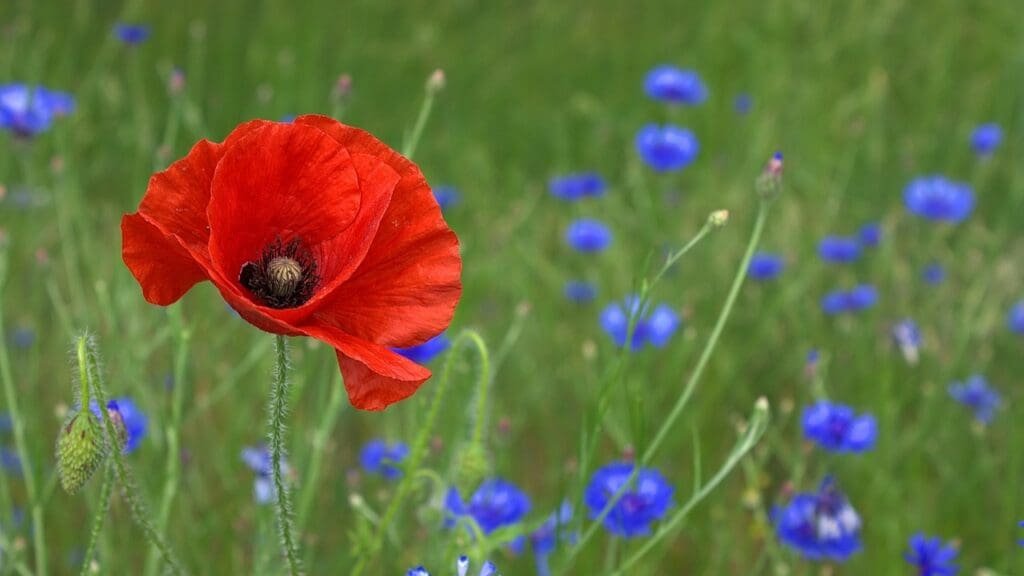
The Flanders Poppy, also known as the ‘Remembrance Poppy,’ is a symbol of fallen soldiers since World War I. This variety is recognized for its ease of growth and its striking scarlet red petals with black markings at the base.
Its flowers are simple yet stunning, featuring delicate, tissue-like petals. When planted in large numbers, they create a breath-taking sea of red. These annual plants are drought-tolerant, reaching about 60cm in height. They thrive best in full sun and well-drained soil.
3. Shirley Poppy (Papaver rhoeas var. Shirley)
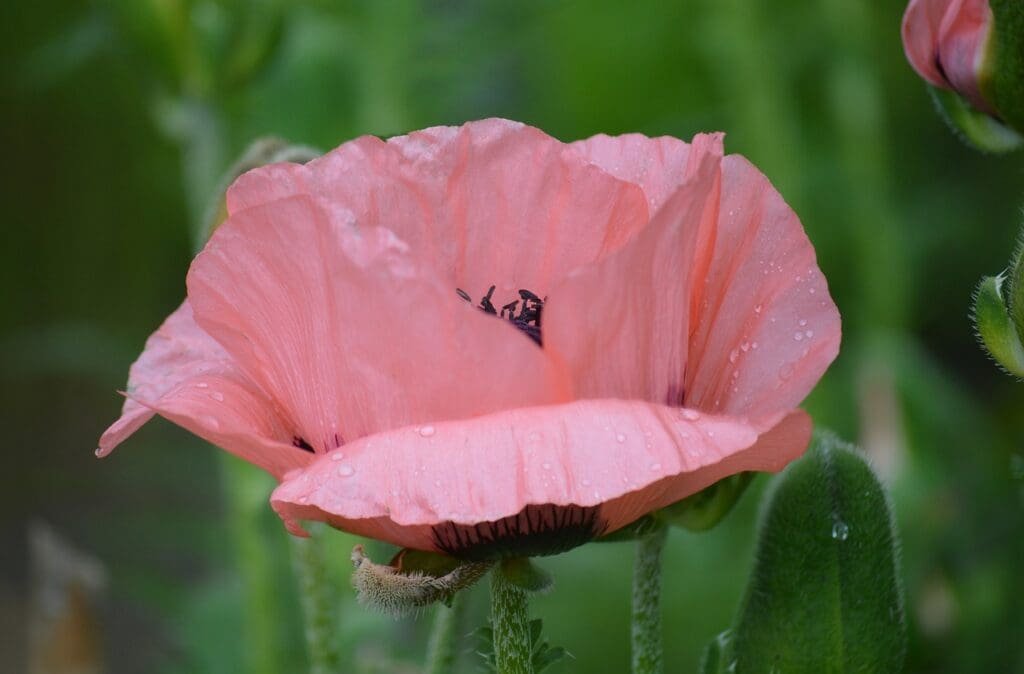
The Shirley Poppy, a variant of the field poppy, was developed in the 1880s by Reverend Wilks of Shirley, England, which is how it got its name. These poppies are known for their delicate, silky petals and come in a range of colors, from soft whites and subtle pinks to vibrant reds, often featuring a distinctive white or black base.
This colour contrast can add a dramatic flair to your garden. Some Shirley poppies even boast beautiful double or semi-double flowers. As annuals, they can reach heights of 60-90cm. They thrive in full sun and well-drained soil and are perfect as cut flowers, bringing a splash of colour to indoor spaces.
Growing Poppies: The Benefits for Wildlife
Your garden can be a haven for local wildlife, and including plants like poppies can be especially beneficial. Poppies bring colour and charm, and they’re also crucial for many creatures.
Birds: Birds, particularly finches and other small species, are drawn to poppy seed heads. After the flowers bloom and dry out, these birds feed on the nutritious seeds, which is especially important in colder months when food is scarce.
Bees and Other Pollinators: Poppies are great for attracting bees and other pollinators. They provide pollen and nectar, essential food sources for bees, butterflies, and insects. With bee populations under threat, growing poppies can be a simple but effective way to help.
Ecosystem Balance: Poppies attract various insects and birds, helping to maintain a balanced ecosystem. They draw predatory insects that feed on common pests, naturally controlling pest populations.
Biodiversity: Different poppy species and varieties can attract various pollinators, increasing biodiversity. This supports a wider range of wildlife in your garden.
In summary, planting poppies not only beautifies your garden but also supports a healthy ecosystem. It’s a small step with a big impact on wildlife conservation, providing food and habitat to diverse creatures and enhancing your local environment’s biodiversity.
FAQs – How to Grow Poppies
Q. Do poppies grow back every year?
Yes and no, it depends on the type of poppy. Perennial poppies, such as Oriental poppies (Papaver orientale), will return to bloom year after year. However, annual varieties like the Flanders or Field poppy (Papaver rhoeas) will need to be sown each year. That being said, many annual poppies are prolific self-seeders, so you may find new plants popping up each year on their own.
Q. Should I deadhead poppies?
Yes, it’s generally a good idea to deadhead poppies once their petals have fallen off. This encourages the plants to produce more flowers. However, if you want your poppies to self-seed (particularly important for annual varieties), leave a few seed heads intact so they can disperse their seeds.
Q. Should poppy seeds be soaked before planting?
Soaking poppy seeds before planting is not necessary. The seeds are small and should germinate well without any pre-soaking. However, if you wish to give them a head start, you could soak them in warm water for about 24 hours before sowing.
Q. Are poppies poisonous to dogs?
Some poppies, like the opium poppy (Papaver somniferum) and the California poppy (Eschscholzia californica), can be harmful to dogs if ingested in large quantities. They contain alkaloids that can cause mild to moderate gastrointestinal upset. However, most dogs would need to consume quite a lot to be seriously harmed. If you suspect your pet has eaten a significant amount of poppies, it’s always best to contact your vet.


